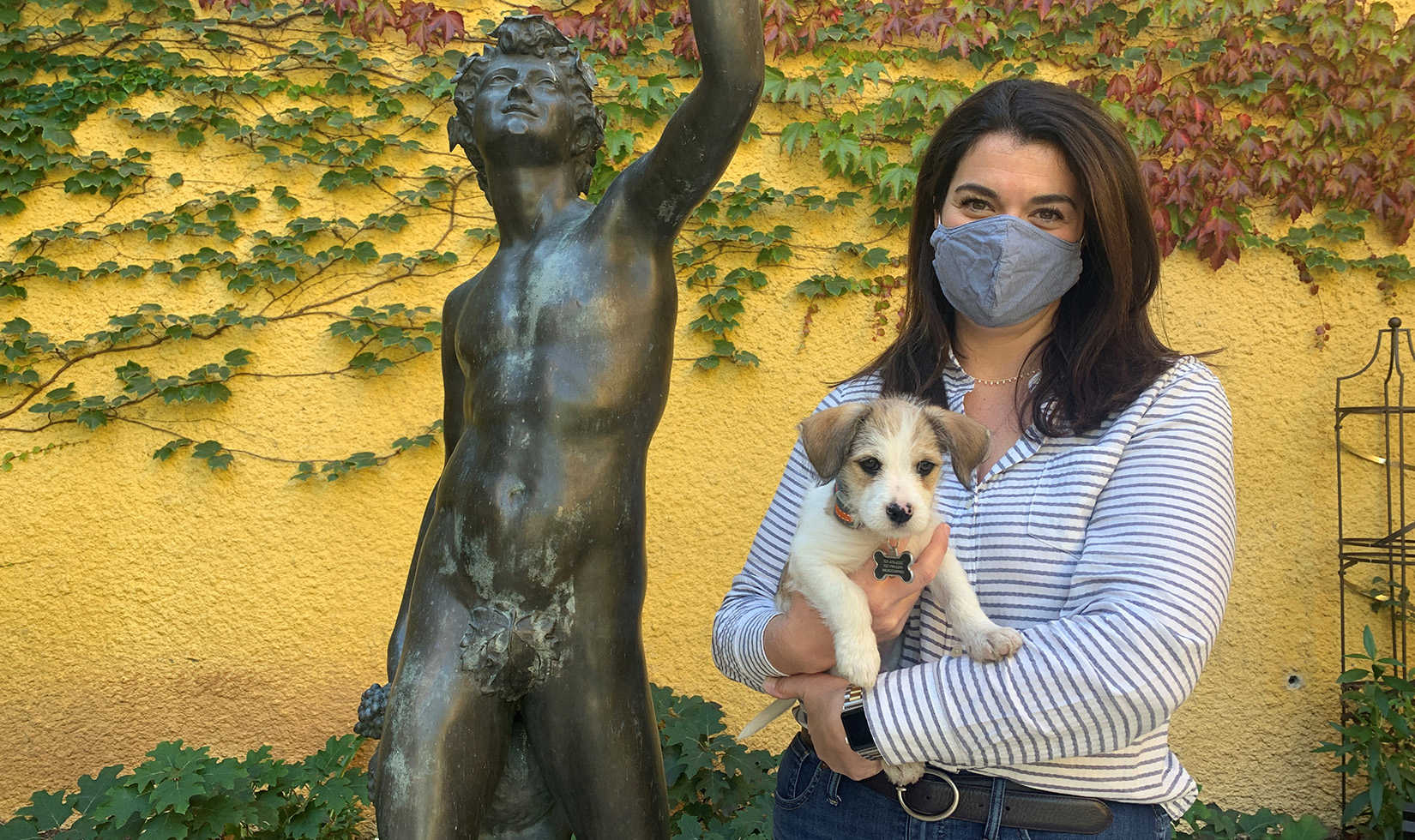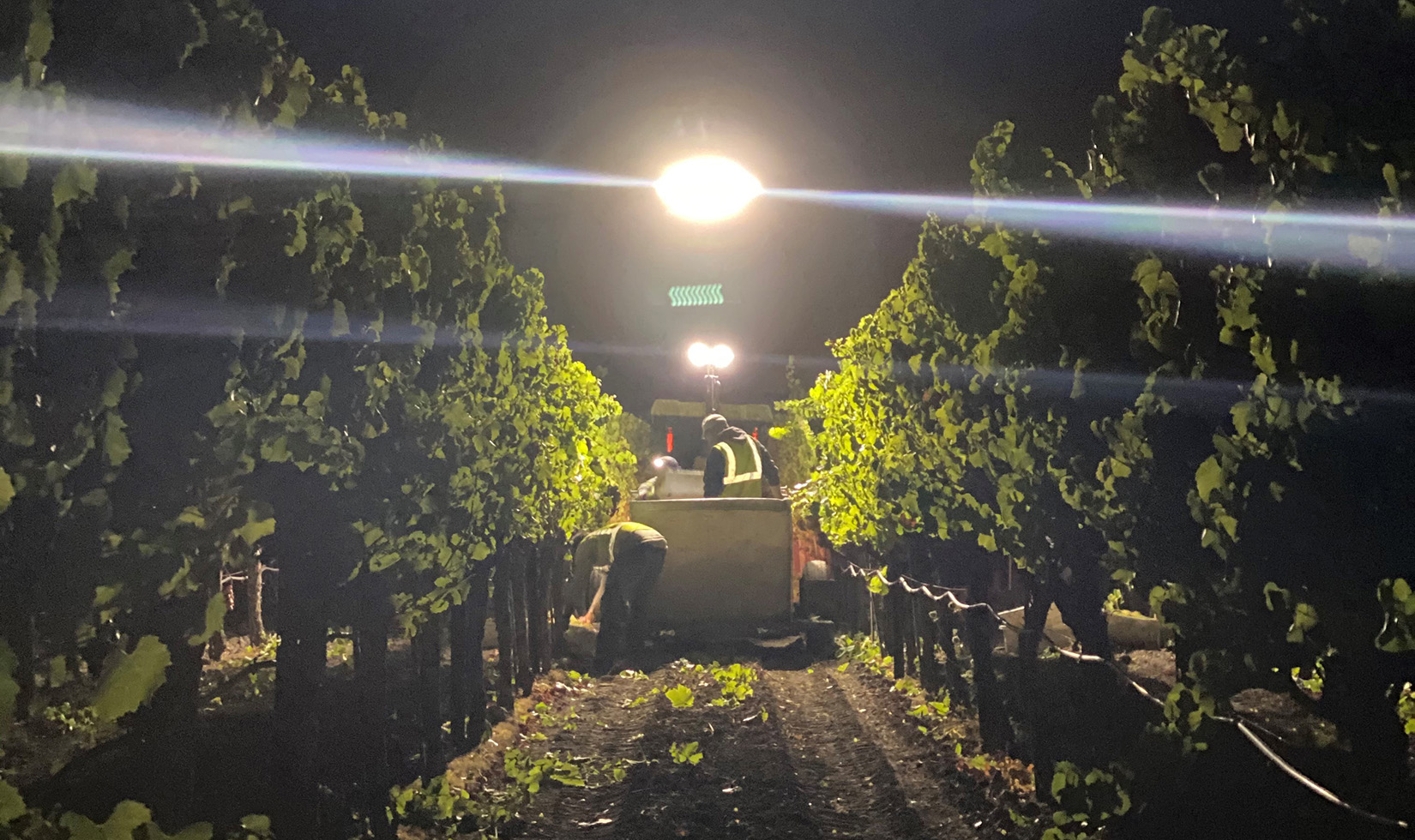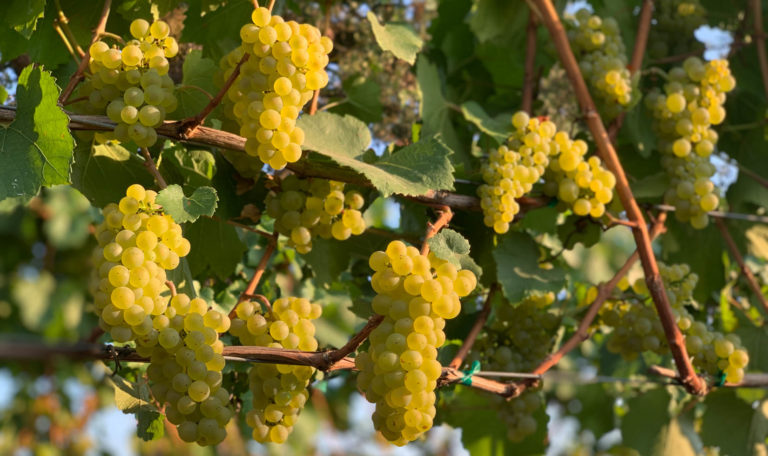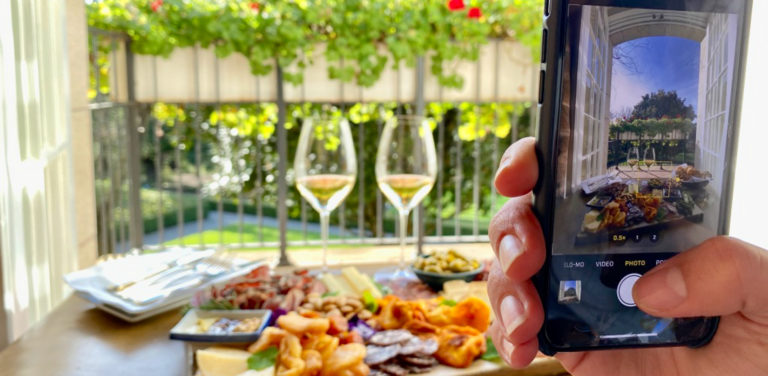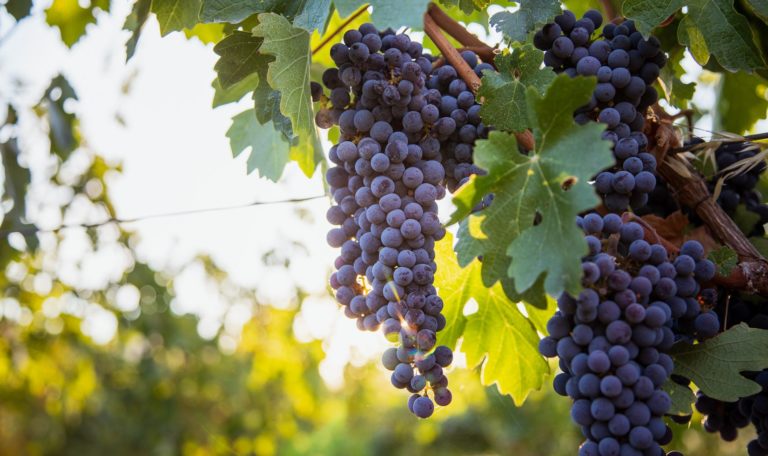There’s no way to sugarcoat the conditions that pushed the vines and vintners to the brink during the 2020 grape harvest season. Between the fires, the smoke and COVID-19 safety guidelines, stress levels were at all-time highs for winemakers throughout the West Coast. I have 15 harvests at Jordan under my belt, and it was absolutely the most challenging vintage of my career—a record held briefly by 2019, thanks to the Kincade Fire. But now that the wines are safely in barrel, I’ve been able to reflect on all that has happened to our community in the last two months and truly appreciate how lucky we are at Jordan. Although tragedy struck many farmers who lost their crops and a dozen Napa wineries that lost buildings, barrels and more, Jordan was able to weather this storm pretty much unscathed. Here’s a snapshot of how we were able to overcome the odds during the 2020 grape harvest season.
Skirting the August Lightning Fires
As discussed in my 2020 Jordan Chardonnay grape harvest blog post, the lightning fires that ignited across California in mid-August, fortunately, didn’t have an impact on our Russian River Valley grower vineyards. The Walbridge Fire, which burned in a remote, forested area west of Healdsburg, was starved of the wind that it needed to spread flames and smoke quickly. This meant that our chardonnay vineyards, which are primarily located farther south in the Russian River along River Road and Eastside Road, were far enough from the fire that smoke drift wasn’t a significant issue. There was, however, one casualty. Grower Relations Manager Dana Grande had found a new chardonnay vineyard farther north in the region along Westside Road, which we were planning to test out to see if it would work with our Burgundy-inspired style of chardonnay. (One grower cabernet sauvignon vineyard in the Dry Creek Valley also lost his crop to the smoke, but it only accounts for three percent of the final blend at Jordan, so we can do without those black cherry flavors and dusty tannins from his grapes this vintage—but it’s still sad.) None of those grapes made it to the crush pad due to their proximity to the Walbridge Fire. But for all other chardonnay vineyards, we ran the necessary laboratory and sensory tests on the grapes before, during and after harvest, and our 2020 Jordan Chardonnay smells and tastes great: beautiful apple and citrus aromas and flavors with bright acidity. Yields were down 20-30 percent for chardonnay, but that was more due to spring rains. I’ll take quality over quantity any year—especially a difficult one like 2020.
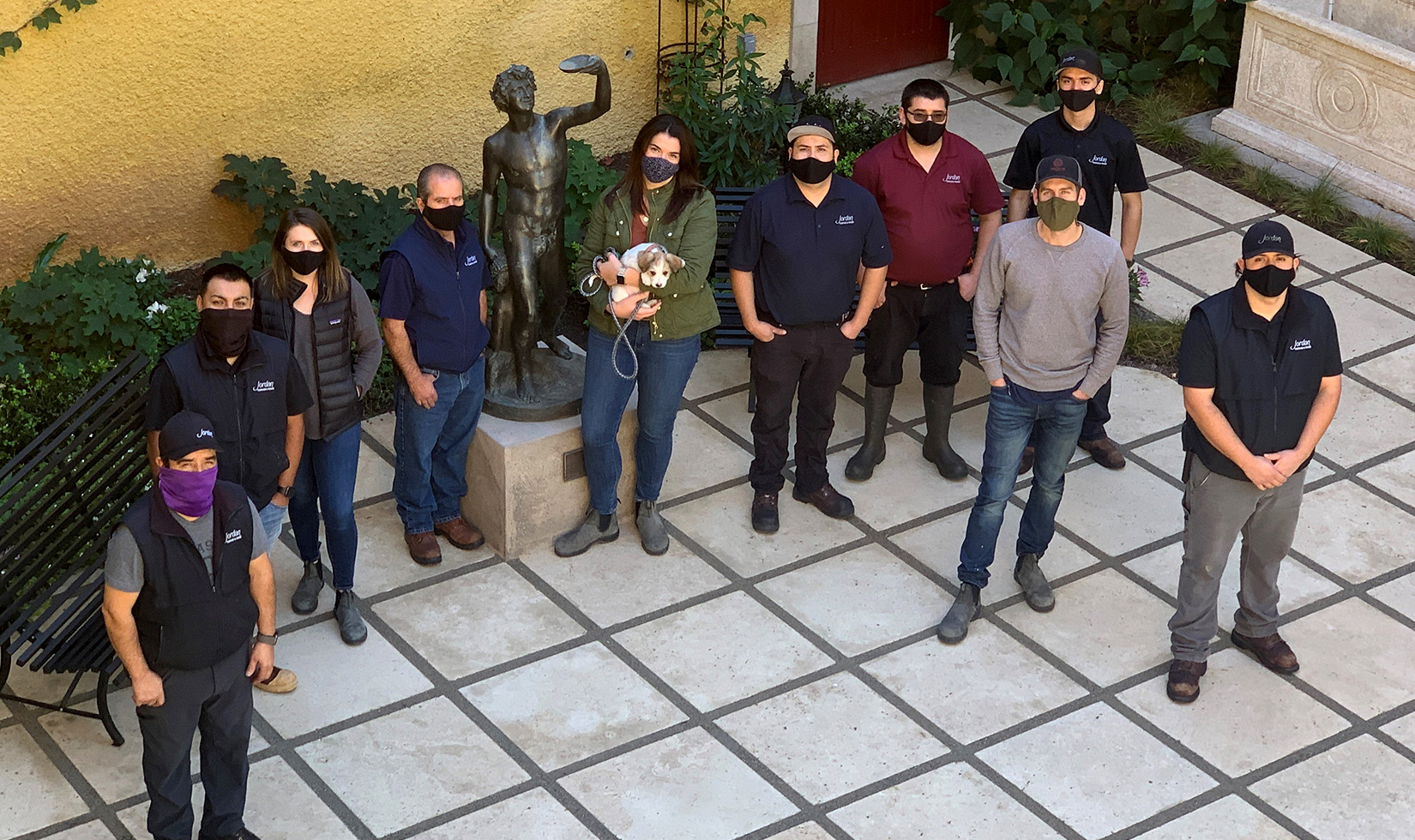
Teamwork has Thrived in the Pandemic
In a typical year, winemakers hire interns from other countries to come and work harvest. It’s an invaluable experience for these young apprentices and an essential, temporary workforce that we rely on every fall. COVID-19 canceled the intern programs just as it’s canceled almost everything else, so we had to get creative. We pride ourselves in having a positive work environment where employees from different departments help others in need. And winemaking and viticulture had lots of needs this year. The Sales department employees who weren’t hosting trade guests due to the pandemic pivoted to helping plant grapevines on the ranch during summer and then cross-trained on pumping the must or crushed grapes into the presses or tanks during harvest. Employees who work in maintenance learned how to operate the hopper while I received the grapes. We worked together as a really small team, which was also good for keeping the harvest crew safe from COVID-19. If anyone would have contracted the virus, the ripple effect at the crush pad would have been devastating. I was so worried that I might get sick and wouldn’t be able to work that I made sure to only interact with my family and production team. We take safety seriously at Jordan, and the winemaking team and cellar crew implemented so many new social distancing and safety measures for blending, bottling and harvest that I think it will take a long time for us to fall back into our old routines once the virus is gone and masks are off.
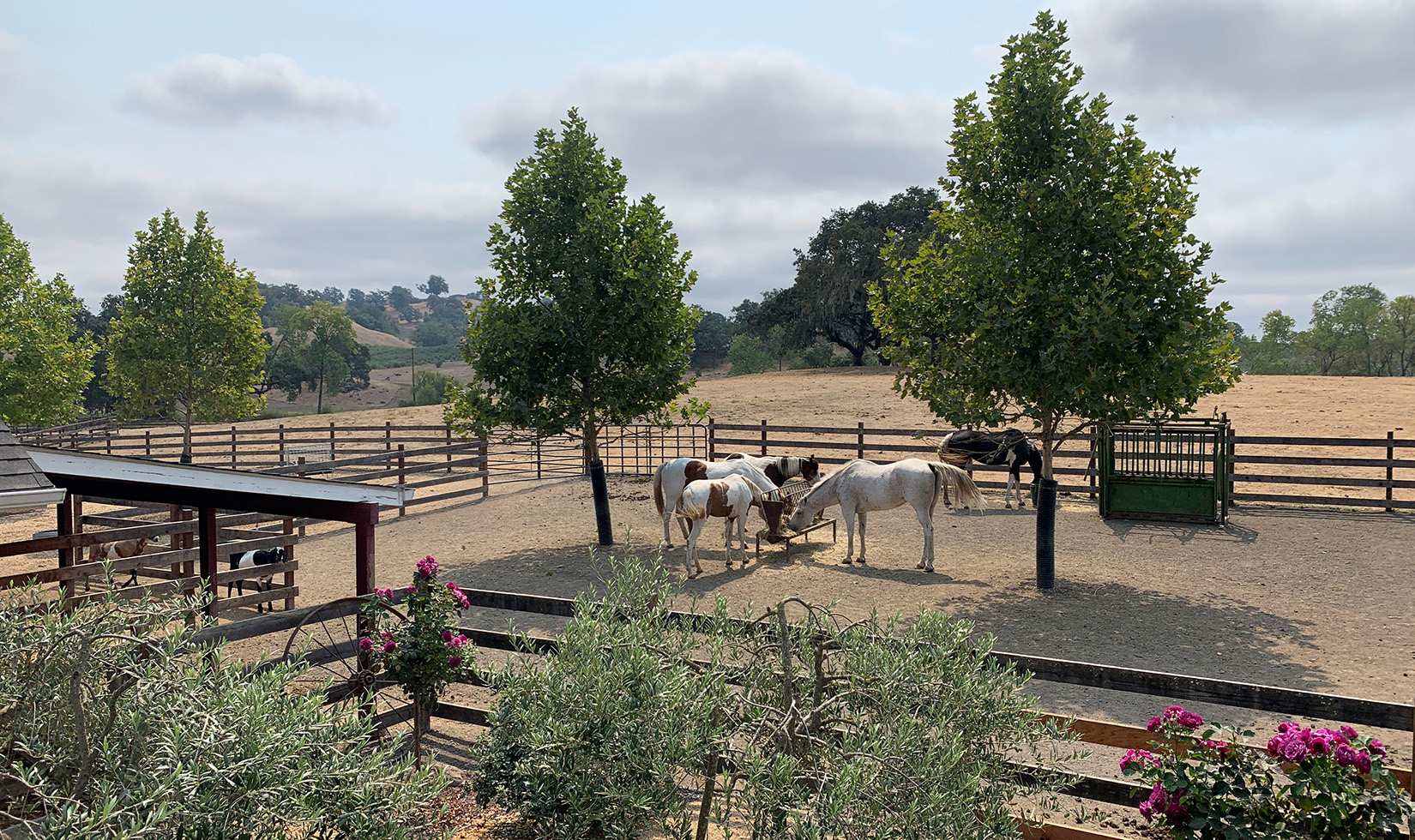
Practicing Patience in September
A Labor Day heatwave really stressed the Bordeaux variety grapes that still had weeks to ripen on the vine. Meanwhile, the Walbridge Fire continued to burn slow and long; it took weeks for it to be contained. Fortunately, the majority of our cabernet sauvignon, merlot, petit verdot and malbec vineyards are located in Alexander Valley, northeast of the winery, which was even farther from the fire. We switched from cloth facemasks to the N95 versions to protect our lungs from ambient smoke. It was incredibly scary to be tasting freshly pressed grapes while my eyes were burning from the smoke. There was the temptation to “panic pick”—rush to get the fruit off the vine when bad weather has happened or is about to occur—but I fought the urge. Rob Davis—Jordan’s winemaker for 43 growing seasons, who retired last year—always taught me that cabernet sauvignon grapes are very hearty; their thicker skins make it harder for the smoke to penetrate. While we were waiting anxiously, the winery farm welcomed some new temporary residents: several horses who lost their home in the Walbridge Fire and are owned by a woman who went to school with John Jordan. Watching our donkeys and goats trying to adapt to their new roommates was a welcome reprieve throughout that hectic time. They were a symbol of survival, a source of inspiration, a beacon. They’re still living on our ranch today.
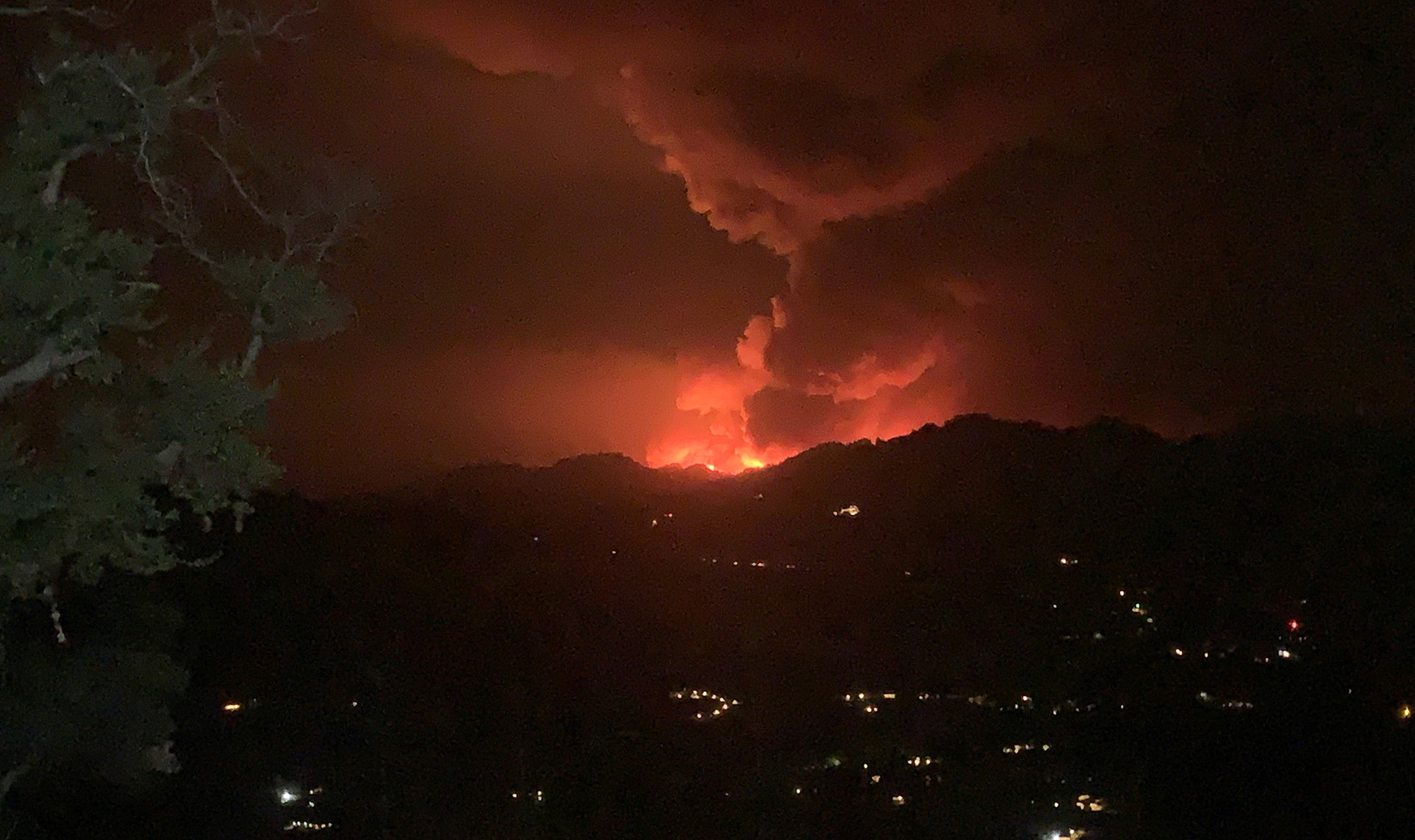
The Second Wave of Fires
We felt blessed to have dodged the first bullet of the 2020 grape harvest—the Walbridge Fire. But just when we started to catch our breath in late September, the Glass Fire broke out in neighboring Napa Valley during the peak of cabernet sauvignon harvest. We still had approximately 60 percent of our red grapes left to pick, and fresh smoke was heading right towards us. I felt numb; I didn’t think we could dodge the damage of smoke taint twice in one harvest. The past few fires have occurred at the end of the season when practically all of the Jordan grapes were off the vine, but 2020 couldn’t be that merciful. That’s not the way 2020 rolls. We had to dig deep and shift all of our focus to protecting the grapes. We had to get the fruit off the vine before too much smoke drifted from Napa Valley into Alexander Valley. We did quick tasting tests on the grapes in the unpicked vineyards, and sugars were at 25 brix. I wanted a touch more concentration in the grapes, which we achieve in typical years (like 2012-2016), but the dark fruit flavors, acids and sugars were there, so we just pulled the trigger and picked the remaining vineyards at an uber-fast pace. Only one grower vineyard, located in southeast Alexander Valley, was closer to the Glass Fire smoke, so we picked it a little earlier than we would have liked just to ensure no smoke taint. At the time, we didn’t have enough tank space at the winery to crush the fruit, so we got creative again. Dana and Ranch Manager Brent Young picked the fruit using the Jordan crew and tractors (the grower’s team wasn’t available quickly enough for us), and stored the gondolas of grapes—covered in dry ice—overnight in our new vineyard shop, where the doors could be closed air-tight to keep the grapes protected from smoke until we were ready to press them. I was also nervous about potential smoke damage in the last vineyard that we picked on October 4th but it is located the farthest northwest from the fire. The fruit smells and tastes like fresh plums and cherries. Cabernet sauvignon yields are down about 15-20 percent due to the heat spike over Labor Day.
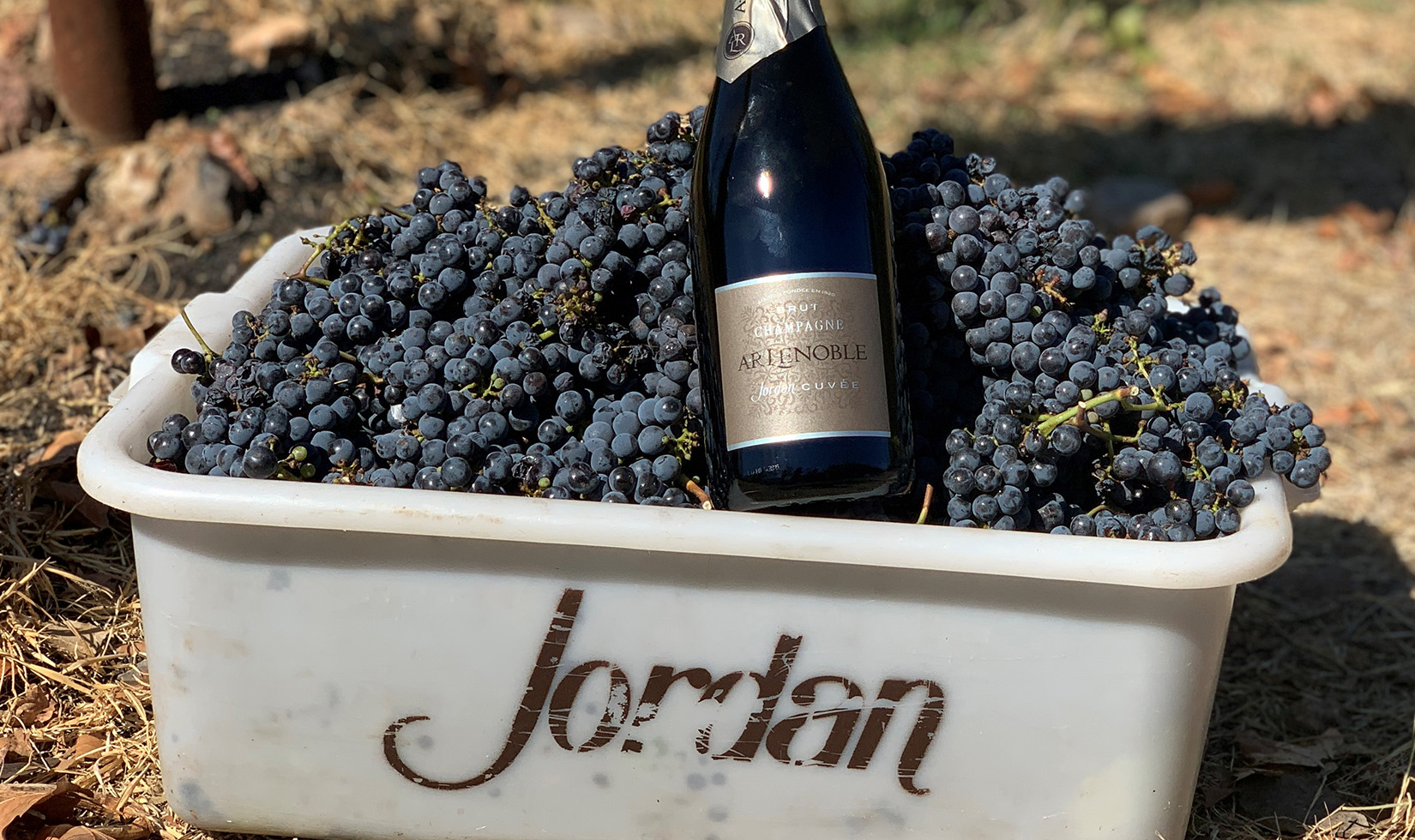
Breathing Fresh Air and Sighs of Relief
As I look back at harvest 2020, it feels as if it was three different vintages in one. I could never have imagined that there would be so many obstacles to overcome. I am incredibly grateful to our amazing harvest team for their dedication to making this the best harvest possible under these conditions. I heard zero complaints when we had to double the amount of vineyard grape samples, do multiple rounds of micro-fermentations to ensure clean fruit, and take on all of those extra hours bringing in additional fruit to try and minimize smoke exposure.
I’m so happy with how the wines are tasting despite all of the drama of 2020 that I celebrated by adopting a rescue puppy. We are going to produce a beautiful Jordan Chardonnay and an incredible Jordan Cabernet Sauvignon. Just as harvest was beginning, Rob was helpful in offering a little perspective. He said, “Remember that all of the 1855 classification top crus in Bordeaux survived two World Wars and lost all of their vineyards to phylloxera.” California’s Wine Country will get through 2020.
Beacons come in many forms. Traditionally, they were small fires lit to guide others. They are also lighthouses or radio transmitters to aid our eyes and ears. Beacons are also simply a source of light or inspiration—like the horses that survived Walbridge. After another year of record fires on top of a pandemic, we at Jordan feel so blessed to have weathered the relentless storm that is 2020 to shepherd another classic vintage into barrel. The wines made in 2020 will be unforgettable, just like its beacons.
View this post on Instagram
